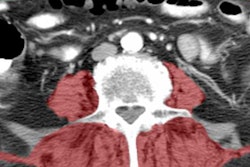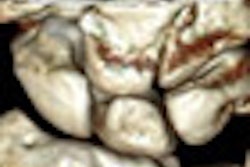SAN FRANCISCO - Researchers presenting at this week's meeting of the American Urological Association (AUA) said that radiation therapy for prostate cancer appears to increase the risk of hip fractures in men who receive the treatment.
To determine whether it was radiation or advanced age that was causing additional fractures, the researchers compared hip fractures in the population receiving radiation therapy to wrist fracture rates.
"Our research suggests that patients treated with 3D external-beam radiotherapy for prostate cancer could benefit from measures to improve bone health, just as we are doing with androgen suppression therapy, to decrease the risk of the high morbidity and mortality that occurs with hip fractures," said Sean Elliott, MD, assistant professor of urological surgery at the University of Minnesota in Minneapolis.
Although Elliott and colleagues only considered data in which external-beam radiation was employed, he said that intensity-modulated radiation therapy would likely have the same relationship to fractures because in both treatments the radiation has to pass through the hip bones in order to affect the prostate.
In performing the study, Elliott scrutinized the Surveillance, Epidemiology, and End Results (SEER) database and identified 166,162 men 66 years of age or older who were diagnosed with prostate cancer.
After controlling for those who were undergoing androgen suppression therapy, as well as other risk factors including osteoporosis, race, and age, researchers determined that undergoing external-beam radiation therapy increased a man's risk of hip fracture by 66.5%, without increasing the risk of wrist fracture, when compared to men who underwent radical prostatectomy (p < 0.001).
The men undergoing external-beam radiation therapy had a slight decrease in risk of wrist fractures when compared to men who underwent radical prostatectomy alone, but the difference was not statistically significant.
Patients being treated with androgen suppression therapy alone had an increased risk of both types of fractures. Wrist fractures in these men increased approximately 70%, and hip fractures increased by 2.5-fold, Elliott said.
Among men being treated with both external-beam radiation and androgen suppression therapy, there was an increased risk of wrist fracture of about 28%, but the risk of hip fracture increased by more than two-fold, Elliott reported. He said that all the differences between hip fracture and wrist fracture among those undergoing radiation therapy achieved statistical significance.
"Maintaining bone health is an important part of treating prostate cancer patients, particularly those on androgen suppression therapy," said Jeff Holzbeierlein, MD, who moderated a press briefing on the topic at the AUA meeting. Holzbeierlein is an associate professor of urology at the University of Kansas Medical Center in Kansas City. "These data suggest that we might consider taking similar measures with our patients who are receiving 3D external-beam radiation therapy."
By Edward Susman
AuntMinnie.com contributing writer
June 3, 2010
Related Reading
MedCAC bombarded with info about prostate radiotherapy, April 26, 2010
Radiation for prostate cancer lacks data: U.S. panel, April 22, 2010
U.S. Medicare panel to weigh prostate treatments, April 19, 2010
Higher RT dose improves outcomes for prostate cancer patients, December 14, 2009
Copyright © 2010 AuntMinnie.com



















